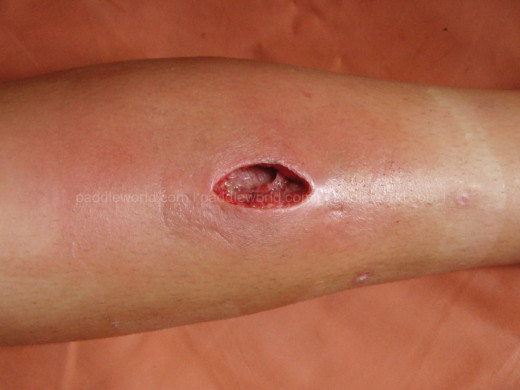Tetanus (Lockjaw): Etiology And Clinical Manifestations
The Disease Is Caused By The Exotoxin Produced By Clostridium tetani

The Etiology Of Tetanus
Tetanus is an acute infectious disease characterized by rigidity, intermittent spasms of the voluntary muscles and convulsions, Trismus, which is a prominent feature, gives it the name “lockjaw”. The disease is caused by the exotoxin produced by Clostridium tetani.
Etiology: Clostridium tetani is commonly found in the soil and the intestinal tract of animals and main. The organism exists as vegetative forms and spores. The latter resist physical agents like heat and boiling and ordinary disinfectants. They can remain viable in vitro for several years. Spores are destroyed by autoclaving at 1210C for 20 minutes. After entry into tissues through wounds, they germinate and grow. Rarely, they may remain dormant for considerable periods. Clostridium tetani produces exotoxins among which two are more important.
- A powerful neurotoxin, tetanospasmin and
- A hemolysin-tetanolysin.
Tetanospasmin is responsible for the clinical disease.
Tetanus is more common after sustaining deep wounds with tissue devitalisation and instruction of foreign materials inside. In such sites, anaerobic conditions are established and C. tetani multiples. In addition to wounds, chronic otitis media, umbilical sepsis of neonates, parturition, septic abortion, burns, intramuscular injections and chronic ulcers may be complicated by tetanus. In about a fifth of the cases, there may be no obvious focus of entry.
Clostridium tetani remains strictly localized to the site of multiplication, but the toxin reaches the central nervous system through the peripheral nerves and blood stream. Tetanospasmin causes disinhibition of both the alpha and gamma motor systems and thereby leads to generalized muscle rigidity. Spasms occur when external stimuli are applied and also spontaneously. Direct effect of the toxin on the muscle leads to contraction. The toxin acts also on the central sympathetic system and possibly on the cerebral cortex are self-limited and they pass off within weeks or months if further absorption of toxin is prevented.
Symptoms Of Tetanus Infection

Infectious Diseases
Clinical Manifestations Of Tetanus
Since it is not essential that infection and injury coincide, it is difficult to ascertain the incubation period exactly in all cases. The incubation period is generally less than 2 weeks, although it may range from 2 to 60 days. Cases with shorter incubation periods tend to be more severe and are associated with higher mortality.
The disease starts with premonitory symptoms like vague discomfort, pain around the sites of injury and restlessness. The diagnosis becomes evident when lockjaw sets in. It is painless or only midly painful. Severe pain should suggest a local cause of trismus. Within hours to days the abdominal and trunk muscles become spastic. Rigidity of the abdominal muscles many stimulate peritonitis. Rigidity and spasm of the back muscles result in hyperextension of the spin and neck (opisthotonus). All muscle groups (both the agnoists and antagonists) go into spasm at the same time. Risus sardonicus is the characteristic grinning expression brought about by the sustained contraction of facial muscles. Rarely dysphagia can be the first presenting symptom. Spasm of the sphincters leads to retention of urine and feces.
Spasmodic contractions involving different parts of the body develop at variable intervals after the onset of rigidity. The interval between the first symptoms and the first convulsion is called the onset period. External stimuli or emotions precipitate these painful spasms which cripple the patient. In severe cases, they may develop spontaneously. Asphyxia results from spasm of the laryngeal and respiratory muscles. Regurgigation of gastric contents leads to aspiration into the respiratory tract. With progress of the disease, the spasms become frequent and prolonged and this leads to muscular exhaustion, hyperpyrexia and cardiac failure. Sympathtetic overactivity causes hypertension, hyperpyrexia and cardiac arrhtymias. Mind remains alert till the end and in many cases, the patient is very anxious. Deep tendon reflexes are generally exaggerated, but the plantar response is flexor.
© 2014 Funom Theophilus Makama









